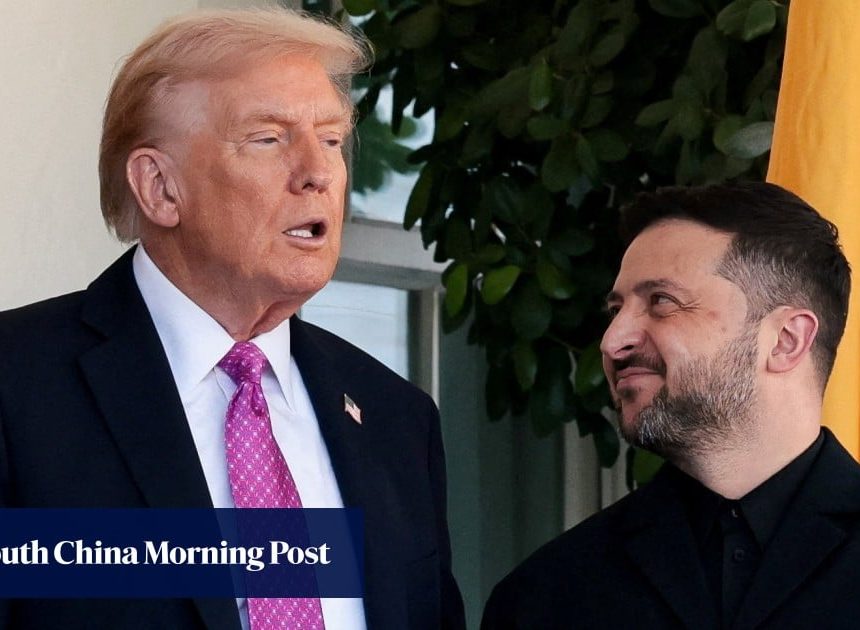United States President Donald Trump is committed to providing Americans with $2,000 cheques using money that has come into government coffers from Trump’s tariffs.
On Wednesday, White House press secretary Karoline Leavitt told reporters that Trump’s staff is exploring how to go about making the plan a reality.
Recommended Stories
list of 4 itemsend of list
The president proposed the idea on his Truth Social media platform on Sunday, five days after his Republican Party lost elections in Virginia, New Jersey and elsewhere largely because of voter discontent with his economic stewardship — specifically, the high cost of living.
A new AP-NORC poll finds that 67 percent of Americans disapprove of Trump’s handling of the economy, while 33 percent approve.
The tariffs are bringing in so much money, the president posted, that “a dividend of at least $2000 a person (not including high income people!) will be paid to everyone.’’
“Trump has taken to his favorite policymaking forum, Truth Social, to make yet another guarantee that Americans are going to receive dividend [cheques] from the revenues collected by tariffs,” Alex Jacquez, who served on the National Economic Council under former US President Joe Biden, said in a statement provided to Al Jazeera.
“It’s interesting that Trump’s arguments—which he has been pushing forward for several months now on Truth Social—do not match the arguments that his lawyers are making in court. It seems he is trying to pressure the Justices by implying that this will be some massive economic disaster if they rule against the tariffs.”
Budget experts have scoffed at Trump’s tariff dividend plan, which conjured memories of the Trump administration’s short-lived plan for Department of Government Efficiency (DOGE) dividend cheques financed by billionaire Elon Musk’s federal budget cuts.
“The numbers just don’t check out,″ Erica York, vice president of federal tax policy at the nonpartisan Tax Foundation, told the Associated Press.
Details are scarce, including what the income limits would be and whether payments would go to children.
Even Trump’s US Treasury secretary, Scott Bessent, sounded a bit blindsided by the audacious dividend plan.
Appearing on Sunday on the ABC News programme This Week, Bessent said he hadn’t discussed the dividend with the president and suggested that it might not mean that Americans would get a cheque from the government. Instead, Bessent said, the rebate might take the form of tax cuts.
The tariffs are certainly raising money — $195bn in the budget year that ended September 30, up 153 percent from $77bn in fiscal 2024. But they still account for less than four percent of federal revenue, and have done little to dent the federal budget deficit, a staggering $1.8 trillion in fiscal 2025.
Budget wonks say Trump’s dividend math doesn’t work.
John Ricco, an analyst with the Budget Lab at Yale University, reckons that Trump’s tariffs will bring in $200bn to $300bn a year in revenue. But a $2,000 dividend — if it went to all Americans, including children — would cost $600bn. “It’s clear that the revenue coming in would not be adequate,” Ricco said.
The analyst also noted that Trump couldn’t just pay the dividends on his own. That would require legislation from Congress.
Legal challenges
Moreover, the centrepiece of Trump’s protectionist trade policies — double-digit taxes on imports from almost every country in the world — may not survive a legal challenge that has reached the US Supreme Court.
In a hearing last week, the court’s justices sounded sceptical about the Trump administration’s assertion of sweeping power to declare national emergencies to justify the tariffs. Trump has bypassed Congress, which has authority under the US Constitution to levy taxes, including tariffs.
If the court strikes down the tariffs, the Trump administration may be refunding money to the importers who paid them, not sending dividend cheques to American families. Trump could find other ways to impose tariffs, even if he loses at the Supreme Court, but it could be cumbersome and time-consuming.
Mainstream economists and budget analysts note that tariffs are paid by US importers who then generally try to pass along the cost to their customers through higher prices.
The dividend plan “misses the mark,” the Tax Foundation’s York said. “If the goal is relief for Americans, just get rid of the tariffs.”


